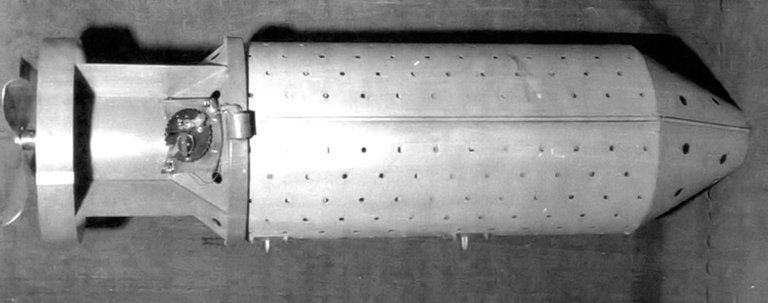A few days ago I blogged about the first"smart" bomb developed during World War II..a bomb not guided by advanced electronics but instead live trained pigeons 😬😢
But that's not the only crazy and creative bomb Allies came up during the same era. There was an equally ingenious bomb developed by the Americans that would make it ideal for striking Japan, where most structures were made of wood and other flammable materials. And if it wasn't for the nuclear bomb chances are it would have seen some if not plenty of action.
Meet the Bat Bomb:

Public Domain, via Wikipedia
Looks like a regular old bomb if you ask me. But as the name implies, it's not.
The bomb is more like a canister that was supposed to carry hundreds of live hibernating bats which in turn carried small incendiary bombs with a timer.
The bombs would be dropped at dawn, the casing would deploy a parachute and the bats would be freed.
Then the hope was that the bats would follow their instincts, with many roosting in the wooden attics and eaves of the Japanese cities.
Then the timer would go off and each bat carrying a small amount of napalm would go BOOM 💥 resulting in thousands and thousands of simultaneous fires. Good luck dealing with the ensuing chaos!
Codenamed X-Ray, the bat bomb gave some really promising results during development..
The National Defense Research Committee observer stated: "It was concluded that X-Ray is an effective weapon."
The chief chemist's report stated that, on a weight basis, X-Ray was more effective than the standard incendiary bombs in use at the time: "Expressed in another way, the regular bombs would give probably 167 to 400 fires per bomb load where X-Ray would give 3,625 to 4,748 fires." sauce
However, the weapon didn't get to see any real action as it was moving a bit slowly and was expected to be ready for real action by mid 1945.. That and the atomic bomb was put to use to finish the war quickly.
Good news for the bats. Not so good for the Japs!
And that's the quick run down of the Bat Bomb. Here's a link to Wikipedia if you'd like to read more on this truly.. fascinating project!
Posted Using InLeo Alpha




